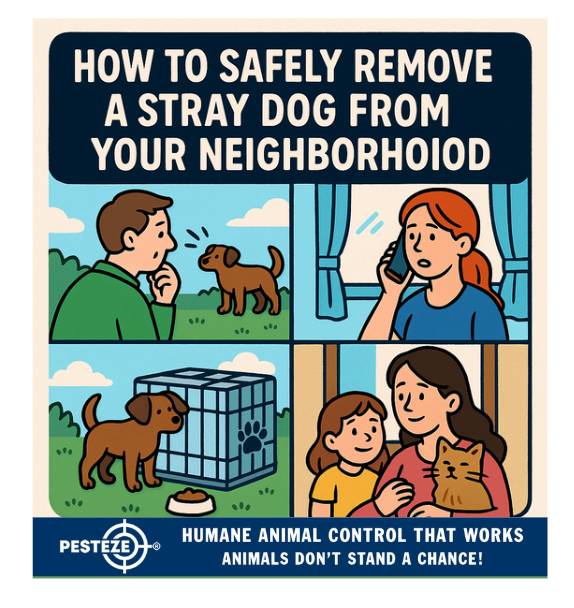HOW TO SAFELY REMOVE A STRAY DOG FROM YOUR NEIGHBORHOOD

HOW TO SAFELY REMOVE A STRAY DOG FROM YOUR NEIGHBORHOOD
SUMMARY
Stray dogs can be unpredictable and may pose risks to people and pets. This guide explains how to safely and humanely handle the situation while protecting yourself, your community, and the animal.
FEATURES
-
Stay calm and observe: Assess the dog’s behavior from a distance.
-
Avoid confrontation: Don’t chase or corner the animal.
-
Protect people and pets: Keep children and animals indoors.
-
Contact authorities: Call animal control or local shelters.
-
Use safe containment: Only if instructed and safe to do so.
-
Support long-term solutions: Encourage spay/neuter and adoption programs.
GUIDE DESCRIPTION
Encountering a stray dog in your neighborhood can be concerning. While many stray dogs are simply lost pets, others may be unvaccinated, fearful, or aggressive. Knowing how to safely remove a stray dog ensures the safety of your community while giving the dog a chance at proper care.
The first step is to stay calm and observe from a distance. Notice whether the dog seems frightened, aggressive, or approachable. Signs of rabies or severe aggression should be taken very seriously, and professional help should be sought immediately.
It’s important to avoid confrontation. Chasing, yelling, or cornering the dog can escalate fear and aggression. Instead, remain calm and avoid sudden movements.
To protect your community, keep people and pets indoors. This prevents accidental encounters that may result in bites or injury. Alert neighbors so they can also keep their families and pets safe.
The next step is to contact local authorities. Call your city’s animal control service, humane society, or local shelter. These organizations are trained to handle strays humanely and can scan the dog for a microchip to reunite it with an owner.
If animal control advises you and it seems safe, you may attempt safe containment. Use food to coax the dog into a fenced yard or a large crate. Always wear protective gloves and avoid direct contact, as strays can carry parasites or diseases.
Finally, think beyond immediate removal by supporting long-term solutions. Promote spay/neuter programs, pet microchipping, and adoption efforts in your community. These reduce the number of stray animals and ensure better treatment for those already on the streets.
By staying calm, avoiding confrontation, protecting your neighborhood, and contacting the right professionals, you can handle stray dogs safely and humanely. These actions protect people while giving the animal the chance for care and a better life.
- Saneeth Thota


Comments 0